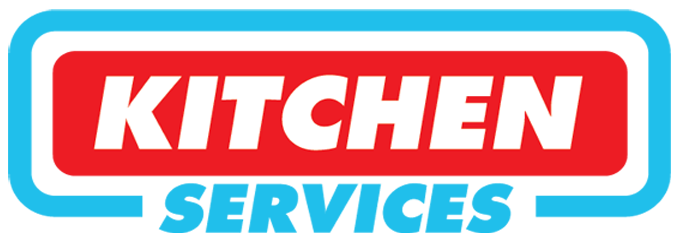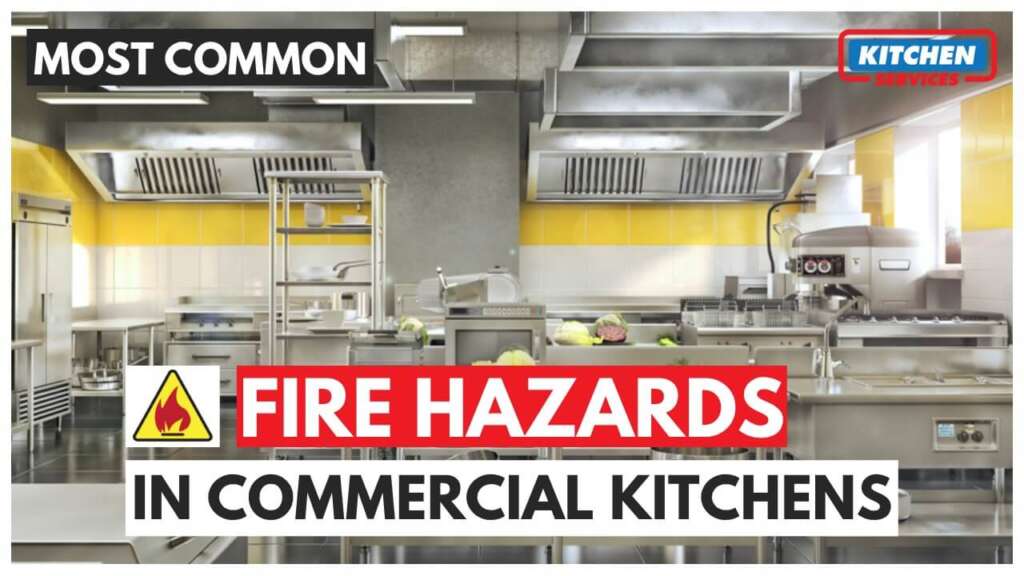Your commercial kitchen is nothing less than a huge fire hazard because of all of its flammable liquids, high temperatures, plentiful paper products, electrical equipment, and motorized tools that are at the risk of overheating all the time. There is nearly 8,000 restaurant that fires every year, which causes over $240 million of property damage every year, not to forget the injuries and fatalities due to fire. In order to protect your restaurant, employees, and customers from damaging restaurant fires, it is very important for you to understand the most common Fire Hazards in Commercial Kitchens, the reasons for restaurant fires and the best steps that you must take towards fire protection in your commercial kitchen.
Some of the major causes of fire hazards in commercial kitchens are as follows.
Top 11 Common Fire Hazards in Commercial Kitchens

Grease
Grease can be among one of the most threatening fire hazards in commercial kitchens due to how quickly it can build up from a single day’s use and how flammable it can be if a fire were to break out. For you and your staff’s safety, you should create a clear cleaning plan and have it written or displayed anywhere it is visible for everyone. If you skip cleaning the grease around your kitchen as it can be easily forgotten, but those days can add up and lead to a huge fire quite quickly.
Grease traps
Most of the commercial kitchens are likely to have grease traps that are installed in order to catch extra grease during your cooking process, all these grease traps that are not cleaned properly may have some stuck pieces of food that are very much likely to catch fire when more hot grease is added into it.
In order to meet the standards that are set by the National Fire Protection Association (NFPA) and Occupational Safety and Health Administration (OSHA), you will always need professional inspection and cleaning of your grease ducts as well as kitchen vent hoods. It totally depends on how fast grease can build up, it is recommended to schedule the cleaning:
- Quarterly for kitchens that operate 24 hours a day or prepare high volumes of food
- Twice a year for sit-down restaurants with moderate levels of food preparation
Guidelines for Commercial Kitchen exhaust Grease duct Cleaning
Lights
Light may not be the direct cause of fire hazards, but light bulbs can be a major source of any sort of injury in your commercial kitchen. In case of temperatures rise ahead of normal, the air inside a light bulb will expand, and it can often cause the bulb to explode, sending fragments flying at high velocity.
Anyone that is present in the surrounding area who is working to control the fire is then in danger of being injured by these high-velocity shards. This hazard can be reduced if you can cover these light bulbs that are near cooking equipment with explosion-resistant covers. You may find this way a relatively low-cost investment and an easy way to help avoid serious injury during a fire.
Fryer
Not just in commercial kitchens but also at our homes, the deep fryer can be one of the most obvious hazardous areas in a kitchen. Basically, it is a container that is full of fuel, a fryer can mean disaster if safety measures are not taken properly. Mercifully, these precautions are quite simple and not expensive at all.
All these fryers should be placed at an acceptable distance that is at least 16 inches from any equipment that may produce an open flame, in order to avoid explosion through the splashes. If the space in your commercial kitchen does not allow for such an arrangement, a 16-inch, noncombustible dividing wall can also serve the same objective. Fryers should always be equipped with automatic fuel shut-off valves so that, in the event of a fire, combustible fuel does not persistently pour in to feed the flames.
Oven
Like any other equipment commercial ovens should always be cleaned frequently, not because of the reasons of health safety, but also to avoid the buildup of inflammable substances. They should also be placed far enough from other equipment same as the fryers in order to avoid the transmission of heat from one oven to the other one. Any equipment that is placed inside the oven should be made of noncombustible material this would seem obvious but is overlooked more often than one might think, and it should also be easy to clean, for the same reason that the oven should be cleaned regularly.
Clothing
As the clothing of your chefs is highly flammable. It as well includes dish towels, pot holders, and other cloths used within the kitchen. You must always make sure you have strict protocol about clothing while in the cooking areas. With many open flames, a loose sleeve or sagging towel can ignite quickly. Employees should also have their hair held back (not just for sanitation reasons).
Electrical wiring
Not to be avoided at any cost, even a small tussle in a wired system can lead to a hazardous fire in your commercial kitchen. You should always be sure to check it there are any frays, breaks, or damage in any wiring system, not only to the visible wires but also to those wires that are out of sight. If you have any electrical wires that are running behind any of the large appliances, either check them regularly or move them to another path that is more visible. Fault in electrical equipment and appliances are more likely to spark a fire.
Hood and vent system
Every commercial kitchen should have a hood, which should be connected to a ventilation system that generally leads outside the commercial building. This hood should cover all of the heat-producing equipment that is stove, oven, griddle, fryer, etc. and this should be built of a durable, incombustible material most preferably steel. Like the fire suppression system, the hood and vent systems should be cleaned and maintenance frequently in order to keep them free of grease build-up because that can quickly transport a kitchen fire to other parts of the building in no time. The cleaning cycle should be heavily informed by the volume of use in the kitchen. All these vents should incorporate the grease filters that are properly installed (not hanging partway off or partially deteriorated) and that can be easily removed for regular cleaning. Grease traps on the hood should drain into a non-flammable metal container, which should be emptied frequently and carefully.
If you are looking for Commerial Kitchen hood Installation services in Santa Monica, Los Angeles and Beverly Hills, we at Kitchen Services, provide competitive price and high quality service. Not only that, we also provide commercial hood cleaning and repair . Besides cleaning and repair, we offer, Kitchen exhaust maintenance services for your commercial kitchen setup.
Open flames
As we know that in commercial kitchens, you are feeding a lot of people with a fast turnover rate and several menu options, any commercial kitchen would be bound to have multiple open flames at the same time. Open flames can be a major risk because many things within the kitchen can catch fire from them. Your chefs and staff should be completely experienced in terms of controlling their open flames and understanding how a fire suppression system works if they were to get out of hand.
Fire extinguishers
It would be the best practice to have at least two fire extinguishers on hand and ready for action in your commercial kitchens. A Class K fire extinguisher is necessary for initial response to grease fires, which is more likely to burn with great intensity than fires fueled by other materials. Class K extinguishers are specifically designed to suppress these fires without splashing fuel and spreading the fire built up further. At least one of these two extinguishers should be installed within 10 feet of any cooking equipment. The commercial kitchen should also have regular Class ABC extinguishers that are easily accessible for other types of fires. All staff should be trained properly for the use of both classes of fire extinguishers and extinguishers should be tested regularly and frequently.
Trash can
Same as everything else in the kitchen, trash cans should also be constructed of noncombustible materials. They should be emptied on a regular basis to avoid an accumulation of fire fodder; these trash cans should be kept a safe distance from open flames and should come fully equipped with sturdy lids to keep their contents from becoming fuel.
Tips to Incorporate into Your Fire Prevention Program

- You must train all your workers on fire hazards in commercial kitchens and what they should do in case of any fire emergency.
- you must place any flammable and combustible materials at a safe distance from any heat sources.
- You should always store flammable and combustible liquids properly.
- Always select advised fire extinguishers for appropriate hazards.
- You and all your employees must have the proper knowledge about the nearest fire extinguisher is located and how to operate it using the PASS system.
- Try to develop an emergency action plan that must be followed.
- Try to conduct emergency evacuation drills in your commercial kitchens.
- Have your exits paths clearly marked and free from obstructions.
- Keep electrical equipment maintained properly.
Fire Hazards in Commercial Kitchens FAQs
How do you prevent commercial kitchen fires?
Here are some tips on how to prevent fires in commercial kitchens.
- Never leave cooking food unattended
- Ensure objects are well away from stoves
- Implement a rigorous cleaning schedule
- Maintain kitchen equipment
- Prep heat detectors and extinguishers
- Have a fire suppression system

